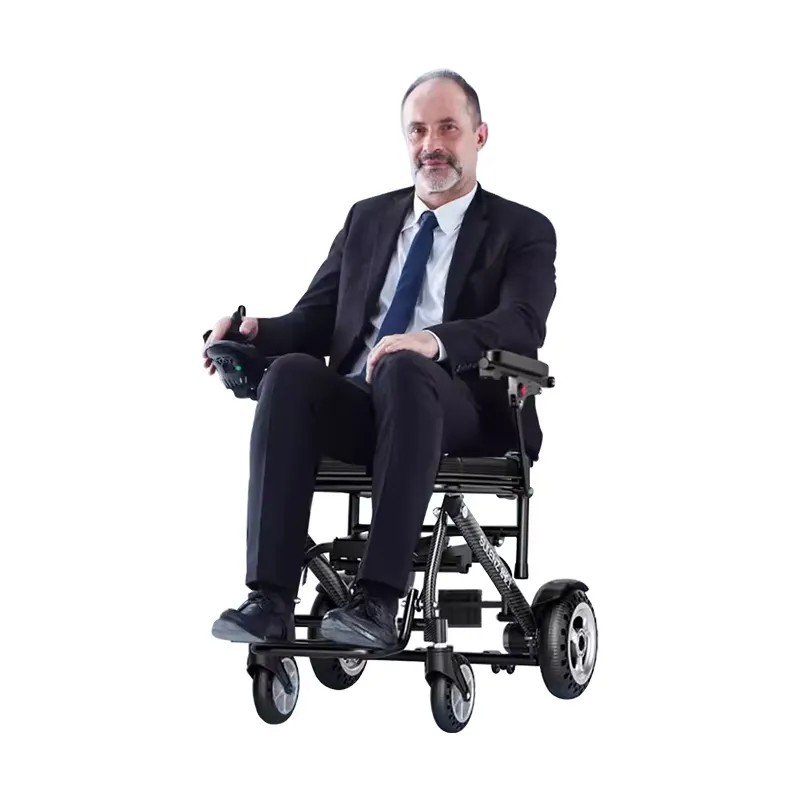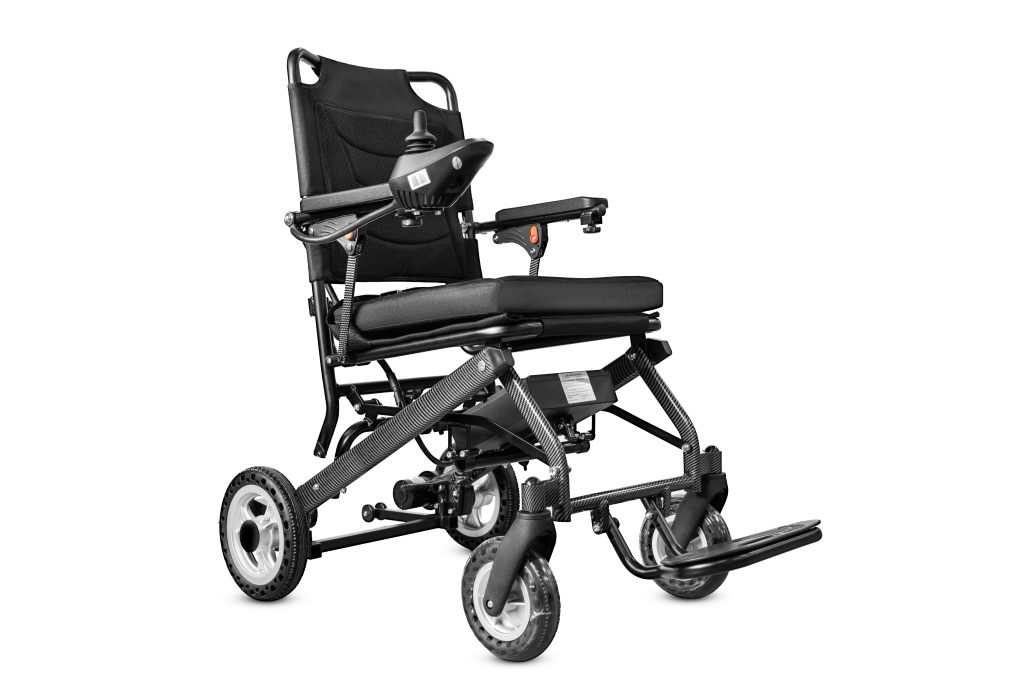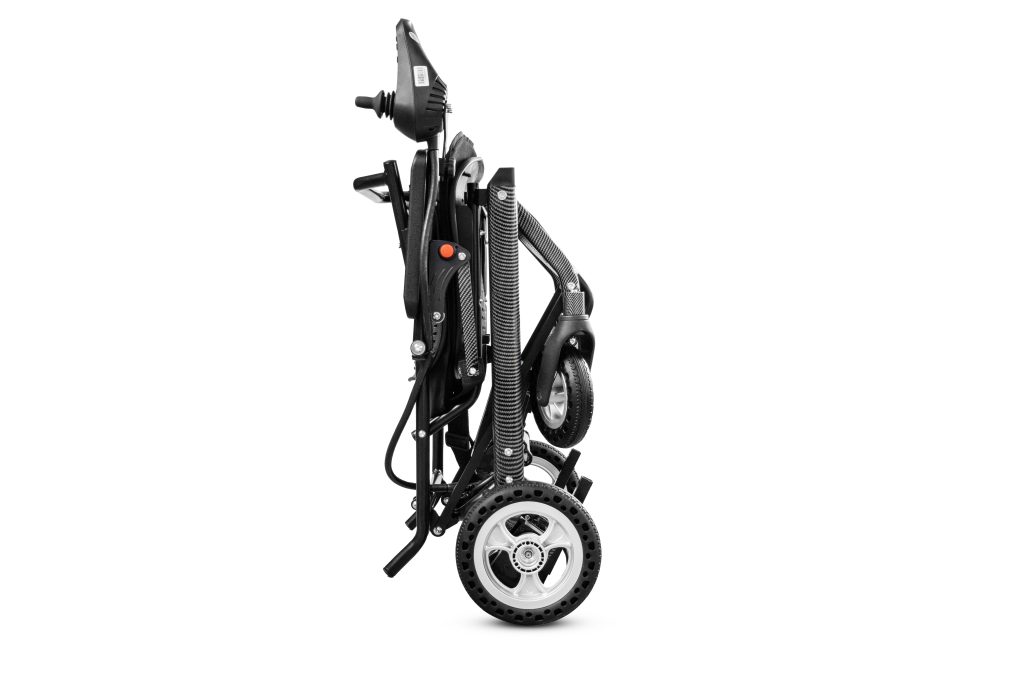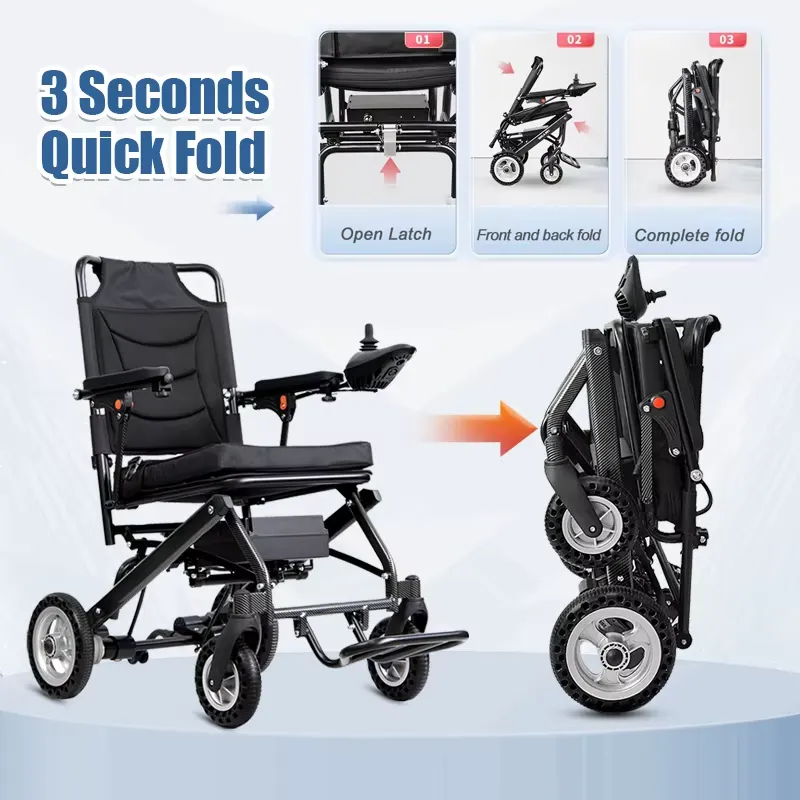The world is a book, and those who do not travel read only one page. But what if you feel like the book is closed to you? I’m here to tell you it’s not. In my experience, the deep-seated desire to explore—to witness a Venetian sunset or navigate the vibrant chaos of a Moroccan souk—isn’t a luxury reserved for the few. It’s a fundamental part of being human.
For years, the sheer mechanics of movement felt like an insurmountable barrier to true globetrotting. But the game has changed. A modern portable electric wheelchair is no longer just a chair; it’s your passport. It’s the brilliantly engineered key that unlocks cobblestone alleyways, bustling airports, and once-inaccessible vistas. It transforms the question from “Can I go?” to “Where am I going next?” If you’re ready to trade limitations for liberation, you’ve come to the right place. Let’s dive into how you can claim your ticket to the world.
The Quick Answer: Can You Really Travel the World with a Portable Electric Wheelchair?
Yes, absolutely. Modern portable electric wheelchairs are specifically designed for global travel. Thanks to lightweight, foldable frames and airline-approved lithium-ion batteries, you can take your mobility device on planes, cruise ships, trains, and cars. The key is to choose the right chair and understand the travel regulations, particularly for air travel.

Why I Believe Freedom of Movement Isn’t a Luxury—It’s Your Passport to the World
I’ve always been a traveler at heart. The idea of seeing new cultures, tasting new foods, and standing in places where history was made is what gets my blood pumping. For a long time, I thought that part of my life was over. The physical logistics felt too complicated, the barriers too high. The thought of navigating an airport, let alone the ancient streets of a foreign city, was exhausting.
Then, I discovered the world of travel-friendly electric wheelchairs. This wasn’t just about getting from point A to point B; it was about reclaiming a piece of my identity. It was the realization that my world didn’t have to shrink. With the right piece of technology, it could expand in ways I had only dreamed of.
This isn’t just a product review or a simple guide. This is my testament to the fact that your spirit of adventure doesn’t have to be limited by mobility challenges. A portable power chair is an instrument of freedom. It’s the difference between watching a travel show and living it. It’s your ticket to say “yes” to that cruise, that flight, that road trip. It’s your passport to a life without limits.
What Actually Makes an Electric Wheelchair “Travel-Ready”? My Non-Negotiable Checklist
Not all electric wheelchairs are created equal, especially when it comes to travel. When I say a chair is “travel-ready” or “built for global mobility,” I mean it meets a specific set of criteria. Forget the heavy, clunky models of the past. Today’s travel power wheelchairs are marvels of engineering. Here’s what I consider non-negotiable.
It’s All About the Weight: Unpacking Lightweight Frames and Why Every Pound Matters
When you’re a frequent flyer or an avid road-tripper, weight is everything. A heavy chair is a logistical nightmare. You need a model that can be easily lifted by you, a travel companion, or even a helpful taxi driver. This is where materials science comes into play.
- Aircraft-Grade Aluminum Alloy: This is a popular choice for its excellent strength-to-weight ratio. It’s durable enough to withstand the rigors of travel without weighing you down.
- Carbon Fiber Frame: The gold standard for
ultra-lightweightmodels. Carbon fiber is incredibly strong—often cited as five times stronger than steel—but astonishingly light. Chairs with this frame can weigh as little as 26 to 33 pounds without the battery.
- Magnesium Alloy: Another premium, lightweight material that contributes to a chair’s portability.
A truly portable electric wheelchair should weigh under 60 pounds total, and ideally closer to 40-50 pounds. When you’re lifting it into a car trunk or handing it over at the gate, you’ll be grateful for every pound you saved.
Foldability is Your Best Friend: One-Piece vs. Disassembling Chairs and What I Prefer
A travel chair needs to be compact. You’ll need it to fit in the trunk of a rental car, a cruise ship cabin closet, or the cargo hold of a plane. There are two main approaches to this:
- One-Piece Folding Chairs: This is my personal preference for convenience. These models use a
quick-fold mechanism—sometimes aone-touch locking mechanismor even anautomatic foldfunction via remote control. They collapse in seconds into a single, manageable piece, much like a baby stroller. Thiscompact foldingdesign is perfect for people who want maximum convenience with minimal fuss.
- Disassembling (Transportable) Chairs: These chairs, sometimes featuring
wireless take-apart technology, break down into several smaller, lighter pieces. The benefit is that theheaviest partis significantly lighter than the whole chair, making it easier to lift piece by piece. While they are a great option, I find the reassembly process can be a bit of a hassle when you’re on the move. However, some argue these can be more durable against rough handling by baggage staff since the components are smaller and more contained.
For me, the seamless experience of a one-piece folding electric wheelchair wins out for pure travel efficiency.
The All-Important Battery: A Deep Dive into Airline-Approved Lithium Batteries (and How to Avoid Headaches at the Airport)
This is the most critical part of traveling by air with an electric wheelchair. Understanding the rules around batteries will ensure a smooth, stress-free airport experience. The vast majority of modern travel chairs use lithium-ion batteries for their lightweight, high energy density, and long life.
Crucial Point: Your battery MUST be airline-approved. This doesn’t mean the airline gives it a special sticker. It means the battery meets specific FAA (Federal Aviation Administration) and IATA (International Air Transport Association) regulations.
Here’s the breakdown of what you need to know:
| Battery Regulation Details | FAA/IATA Guideline | My Practical Advice |
|---|---|---|
| Installed Battery | A single installed battery must not exceed 300 watt-hours (Wh). | Your wheelchair manufacturer will specify the Wh rating. Almost all travel chairs are designed to be compliant. |
| Spare Batteries | You can carry up to two spare batteries, but each must not exceed 160 watt-hours (Wh). | If you need extra driving range , carrying a spare is a great idea. Just make sure it meets the lower Wh limit. |
| Battery Removal | Removable batteries must be taken out of the wheelchair before it’s checked into the cargo hold. | Practice removing your battery at home. It should be a quick and easy process. |
| Carry-On Requirement | Removed batteries MUST be carried with you in the cabin in your carry-on baggage. Never put a loose lithium-ion battery in checked luggage. | This is a major safety rule. No exceptions. |
| Terminal Protection | The battery terminals must be protected from a short circuit. | Most travel batteries come with a protective pouch . If not, you can place tape over the terminals or put each battery in a separate plastic bag. |
| Forbidden Batteries | Lithium metal (non-rechargeable lithium) batteries are forbidden for use with mobility devices on passenger aircraft. | This won’t be an issue with 99% of modern electric wheelchairs, which use rechargeable lithium-ion. |
I also highly recommend carrying your battery’s documentation (a spec sheet or a UN38.3 test report) with you. While rarely asked for, having proof of your battery’s compliance can instantly resolve any questions from airline staff.

Conquering the Airport: My Step-by-Step Guide to Flying with Your Portable Chair
Flying with an electric wheelchair can feel daunting, but with a little preparation, it becomes routine. In the United States, the Air Carrier Access Act (ACAA) protects your rights and ensures airlines provide necessary accommodations. Here’s how I navigate the process like a pro.
Before You Book: The Crucial Phone Call to the Airline’s Special Assistance Desk
This is the most important step. At least 48 hours before your flight, you need to make a pre-flight notification call.
- Call the Airline: Find the number for their “Special Assistance” or “Accessibility” desk.
- Inform Them: Tell them you will be traveling with a “folding electric wheelchair” or “portable power chair” that uses a lithium-ion battery.
- Provide Details: They will ask for the wheelchair’s dimensions and weight, and they will confirm the battery’s watt-hour (Wh) rating. Have this information ready.
- Confirm the Process: Ask them to confirm their
gate checkprocedure. This means you will ride your wheelchair all the way to the door of the aircraft.
This call gets everything documented in your reservation, alerting the ground crew and flight staff that you and your mobility device are coming.
Day of Travel: Navigating Check-In, Security, and Gate-Checking Your Wheelchair Like a Pro
- Arrival: Arrive at the airport a little earlier than you normally would, maybe an extra 30-60 minutes.
- Check-In: At the check-in counter, remind the agent about your wheelchair. They will add a tag for it to be gate-checked. You will not be separated from your chair.
- Security Screening: You will go through the security checkpoint with your chair. The TSA has a dedicated helpline called TSA Cares for travelers with disabilities and medical conditions, which you can call 72 hours prior to travel for information. At the checkpoint, you may be asked to go through a separate screening process. It’s typically straightforward and professional.
- To the Gate: Once through security, you can proceed to your gate as normal. Use this time to grab a coffee or a snack.
- Gate-Check: When it’s time to board, you will be one of the first to get on. You’ll drive your wheelchair down the jet bridge to the aircraft door. There, you will:
- Transfer out of your wheelchair (either to an aisle chair provided by the airline or by walking if you are able).
- Remove your lithium-ion battery to take into the cabin.
- Fold your chair. The ground crew will take your folded chair and load it into the cargo hold.
Protecting Your Ride: How I Prepare My Wheelchair to Prevent Damage in Transit
While airlines are responsible for lost or damaged mobility devices, you can take steps to minimize the risk.
- Remove Loose Items: Take off any removable parts like the joystick, cushions, or storage bags. Carry these items with you in the cabin. A
removable compact joystickis a fantastic feature for this reason.
- Use a Protective Cover: A simple, durable cover can protect your chair from scuffs and scratches.
- Add a Label: Put a tag on your chair with your name, contact information, and clear handling instructions like “FRAGILE” and “LITHIUM-ION BATTERY REMOVED.”
Upon arrival, your wheelchair will usually be brought to the jet bridge. I always do a quick visual inspection for any damage before leaving the gate area.
Beyond the Plane: Navigating Trains, Cruises, Cobblestones, and More
Your travel adventures don’t stop at the airport. A portable electric wheelchair opens up a world of possibilities across different modes of transport and destinations.
All Aboard! Tips for Taking Your Wheelchair on Cruises and Ferries
Cruises are one of the most accessible ways to travel. Modern cruise ships are designed with mobility in mind, featuring wide hallways, accessible cabins, and ramps. Most portable electric wheelchairs are considered cruise-approved without any special arrangements. Your compact chair will easily fit in a standard cabin, giving you the freedom to explore the ship’s decks, restaurants, and theaters. When you dock at a new port, you’re ready to roll off and start exploring immediately.
Hitting the Road: Finding Accessible Taxis and What to Know About Rental Cars
For ground transportation, the compact and lightweight nature of your chair is a huge advantage. It can easily be folded and placed in the trunk of most standard rental cars or taxis. In many cities around the world, ride-sharing apps now have options for ordering wheelchair-accessible vehicles (WAVs).
When it comes to surfaces, modern chairs are more capable than ever. While you should still research ahead for accessibility, many chairs with durable, puncture-proof tires and a decent suspension system can handle more than just smooth pavement. I’ve successfully navigated light grass, packed gravel, and even the dreaded cobblestones of historic European cities. Look for wheelchair-friendly destinations like Barcelona, London, Sydney, Vancouver, and Washington, D.C., which are known for their accessible public transit and smooth pathways.
How to Choose Your Perfect Travel Companion: A Practical Buying Guide
Selecting the right chair is a personal decision based on your unique travel style and physical needs. Here’s how I break down the decision-making process.
Performance vs. Portability: Finding the Sweet Spot for Your Travel Style
There’s often a trade-off between an ultra-lightweight design and high-performance features.
- Prioritize Portability: If you are a frequent flyer and your primary need is a chair that is easy to manage in airports and lift into cars, focus on the lightest models made from carbon fiber or aluminum. These may have a slightly shorter
driving rangeor smaller wheels.
- Prioritize Performance: If your travels involve more outdoor exploration or varied terrain, you might want a chair with larger,
all-terrainwheels, a more robust suspension system, and a longer battery life. These models might be slightly heavier but offer more capability for navigating grass, trails, and hills.
Your perfect chair is the one that finds the right balance for the kind of adventures you want to have.

Don’t Overlook Comfort: Why Seat Quality and Adjustability Are Crucial for Long Days of Exploring
You’re going to be spending a lot of time in your chair. Comfort is not a luxury; it’s a necessity. Look for:
- High-Density Foam Cushioning: A supportive,
padded seatprevents fatigue and pressure sores. Some models offermemory foamfor superior comfort.
- Breathable Upholstery: This is important for staying cool and comfortable, especially in warmer climates.
- Adjustable Components: Features like
adjustable armrestsand footrests allow you to customize the fit to your body, ensuring ergonomic support throughout the day.
My Must-Have Features: What I Look for in a Truly “Global” Wheelchair
When I’m evaluating a chair for international travel, here’s my checklist:
| Feature | Why It’s a Must-Have |
|---|---|
| FAA-Approved Lithium Battery | Non-negotiable for air travel. Ensures compliance and safety. |
| Lightweight Frame (< 55 lbs) | Makes the chair easy to lift, handle, and store. Critical for independent travel. |
| Compact, One-Step Folding | Maximum convenience for getting in and out of vehicles and storing in tight spaces. |
| Durable, Flat-Free Tires | Provides a smooth ride and peace of mind. No one wants a flat tire on vacation. |
| Tight Turning Radius | Essential for maneuvering through crowded airports, narrow shop aisles, and old-city streets. |
| Intuitive Joystick Control | The controls should be simple and responsive. A removable joystick is a bonus for transport. |
| Safety Features | Look for anti-tip wheels and reliable electromagnetic brakes that engage automatically when you stop. |
| USB Charging Port | A small but incredibly useful feature for keeping your phone charged on the go. |
My Go-To Accessories That Make Traveling Infinitely Easier
The right accessories can elevate your travel experience from good to great.
- Cup Holder: Simple, but essential for staying hydrated on long days.
- Under-Seat Storage Bag: Perfect for stowing souvenirs, a light jacket, or snacks.
- Travel Cover: Protects your investment from scratches and dirt during transit.
- Spare Battery: For those extra-long exploration days when you don’t want to worry about running out of power.
- International Power Adapter: A must-have for charging your chair in different countries.
Your Adventure Awaits: Final Thoughts on a Life Without Limits
The biggest barrier to travel is often the one we build in our own minds. We convince ourselves it’s too hard, too complicated, or not for us. I’m here to tell you that technology has torn down those barriers. A portable electric wheelchair isn’t a sign of limitation; it’s a declaration of independence.
It’s the tool that lets you say “yes” to the world. Yes to that trip. Yes to that adventure. Yes to rediscovering parts of yourself you thought were gone.
So, where are you going next? The book of the world is open. It’s time to start turning the pages.

